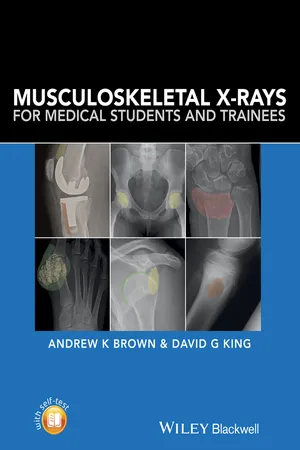
- English
- ePUB (mobile friendly)
- Available on iOS & Android
Musculoskeletal X-Rays for Medical Students and Trainees
About This Book
Musculoskeletal X-rays for Medical Students provides the key principles and skills needed for the assessment of normal and abnormal musculoskeletal radiographs. With a focus on concise information and clear visual presentation, it uses a unique colour overlay system to clearly present abnormalities. Musculoskeletal X-rays for Medical Students:
•Presents each radiograph twice, side by side – once as would be seen in a clinical setting and again with clearly highlighted anatomy or pathology
•Focuses on radiographic appearances and abnormalities seen in common clinical presentations, highlighting key learning points relevant to each condition
•Covers introductory principles, normal anatomy and common pathologies, in addition to disease-specific sections covering adult and paediatric practice
•Includes self-assessment to test knowledge and presentation techniques Musculoskeletal X-rays for Medical Students is designed for medical students, junior doctors, nurses and radiographers, and is ideal for both study and clinical reference.
Frequently asked questions
Information
PART 1
Introduction
1
Musculoskeletal X‐rays
Introduction
Basic principles of requesting plain radiographs of bones and joints
Which structures?
Which views?
Table of contents
- Cover
- Title Page
- Table of Contents
- Preface
- Acknowledgements
- PART 1: Introduction
- PART 2: Pathology
- PART 3
- Self-assessment questions
- Self-assessment questions
- Index
- End User License Agreement